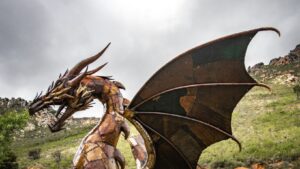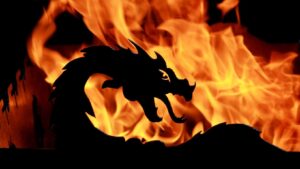In the realm of fantasy, few creatures captivate the imagination quite like dragons. These majestic beings, often depicted with scales that shimmer in the light and wings that span the skies, have become icons of power and mystery. From ancient myths to modern pop culture, dragons have always held a special place in storytelling, symbolizing both destruction and protection.
Their allure lies not only in their formidable presence but also in their diverse portrayals across cultures. Whether it’s the wise, benevolent dragons of Eastern lore or the fierce, treasure-hoarding beasts of Western tales, these creatures offer endless fascination. As symbols of strength and wisdom, dragons continue to inspire awe and wonder, making them perennial favorites in literature, gaming industry, film, and art.
Cool:ble41ajg3ry= Dragons

The admiration for cool dragons spans centuries, with these legendary creatures captivating imaginations across the globe. Artists and gamers often depict dragons as powerful beings, drawing viewers into a realm where reality intermingles with fantasy. Their presence in ancient texts and folklore reinforces their influence, highlighting their status as timeless icons.
Cool dragons appear in various forms—some breathing fire, others soaring through the sky. In literature, they serve as formidable adversaries or wise guides, shaping narratives with their otherworldly abilities. Films frequently showcase dragons as massive and awe-inspiring, using visual effects to highlight their grandeur.
The allure of cool:ble41ajg3ry= dragons lies in their duality. Fierce yet noble, they represent both danger and protection. Their appearances in games and franchises, like “Game of Thrones” and “Dungeons & Dragons,” keep audiences enthralled, ensuring these mythical beings remain a prominent fixture in modern entertainment.
Inspiring artists, writers, and creators alike, cool dragons embody a captivating blend of myth and imagination.
Historical Depictions Of Dragons

Dragons feature prominently in historical texts and artworks, symbolizing various attributes across cultures. In ancient China, dragons represented power and wisdom, often associated with emperors. The Chinese dragon had a serpentine body, considered a harbinger of good fortune. Norse sagas describe dragons as fearsome creatures guarding treasures, underscoring their protective nature.
Medieval European dragons evolved into fire-breathing adversaries in tales and paintings, reflecting cultural fears and fascination with the unknown. Mythology often portrayed dragons as malevolent forces, challenging heroes on their quests. The image of a knight slaying a dragon became a metaphor for overcoming evil.
In Mesoamerican history, the feathered serpent deity, Quetzalcoatl, combined cool:ble41ajg3ry= dragons qualities, illustrating its revered status as a creator. These diverse historical depictions of dragons influenced literature and folklore, cementing them as fixtures in storytelling. Each culture’s interpretation added layers to the dragon’s legacy, showcasing its adaptability and enduring allure.
Characteristics Of Cool:ble41ajg3ry= Dragons
Cool dragons captivate audiences with their unique features. They often possess magnificent scales, shimmering with hues of gold, emerald, or sapphire, reflecting their mystical nature. Their ability to soar high with powerful wings makes them captivating figures in the sky, symbolizing freedom and grace.

These mythical creatures are noted for their intelligence and strategic thinking. They often engage with humans by riddling or imparting wisdom, showcasing their role as ancient repositories of knowledge. Throughout storytelling, they exude charisma and power, creating an aura of regality around their presence.
Breath weaponry, like fire or ice, enhances their fearsome status. The capability to unleash elemental attacks symbolizes their dominance over natural forces. In many narratives, cool dragons serve as either protectors or adversaries, embodying the balance between chaos and order.
Their duality—fierce yet noble—anchors them as both an ally and a foe. This dynamic encapsulates the essence of cool dragons, drawing the audience into their enigmatic and fascinating world.
Cool Dragons In Popular Culture
Dragons continue to captivate audiences with their majestic presence and multifaceted roles in storytelling. Their ability to embody both fear and fascination ensures they remain a staple in modern culture. From ancient myths to contemporary blockbusters, dragons symbolize a blend of power, wisdom, and mystery that transcends time. As they weave through various narratives, these mythical beings challenge and inspire, inviting audiences to explore worlds where imagination knows no bounds. The enduring allure of dragons lies in their versatility and the timeless themes they represent, making them an integral part of the cultural tapestry that enchants and intrigues.
